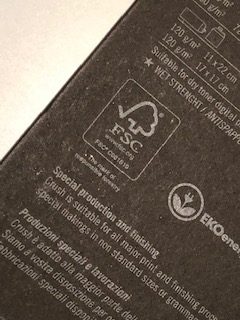
It is evident and for all to see that our home, the Earth, is suffering. Human activities have had and continue to have a strong (unfortunately often very negative) impact on it. The good news is that each of us, with simple gestures, can do something to help the Planet. Below are 5 simple gestures that can help improve the health of our planet and benefit all living beings who live there.
According to UN data from 2017, there are 51 trillion particles of microplastic in the seas, and the washing of synthetic garments would be the cause of the phenomenon to the extent of 35% (Source: Textile Exchange).
The use of animal fibers – such as merino wool – as an alternative to synthetic fibers can help in the fight against microplastics.
In fact, merino wool garments require less washing both in terms of water temperature and in terms of frequency of washing.
Thanks to the natural properties of its fiber, merino wool is antibacterial and resistant to odors and stains.
With the same physical activity carried out, a merino wool t-shirt can simply be put in the fresh air after use to regain its freshness. This allows you to avoid washing at each use with great benefit for the planet thanks to less water pollution and limited use of electricity.

In addition, for the same characteristics mentioned above, the merino wool garments can be washed and ironed at low temperatures. The hand program (at 30 °) of a normal washing machine is ideal.
Taking care of wool garments is simple and is good for the planet!
What man produces has an impact (more or less important) on the environment. In order to reduce this impact on the planet, it is desirable that the production model aimed at disposable consumption be abandoned in favor of a circular model that extends the life of the product. Eco-design helps to design today’s products with the aim of extending their duration in the first life cycle and, in order to reduce the impact on the Planet, foreseeing, from the design stages, how to allocate it to a second life. following its first use, through the recovery of the components and raw material of which this product is composed.
Buying garments designed and produced according to these criteria is the first simple gesture to support the shift towards responsible consumption in favor of the health of our planet.
Four Paws, the world association for animal welfare, has recently published the report “ Animal Welfare in Fashion ”, an analysis of the sensitivity of the most important luxury brands in the use of animal derivatives in clothing.
The goal is the gradual improvement of the living conditions of the animals, to avoid their suffering and to guarantee them protection.
Wool and leather are the most used materials of animal origin, even in the fashion sector.
It is important to choose “mulesing free” certified merino wool garments to guarantee respect for the sheep, for its health and well-being. Mulesing is a form of mutilation of the animal that prevents the formation of parasites. The goal can also be achieved through forms of treatment and prevention.
Brands and consumers have a great responsibility towards animals and their welfare. It is necessary, but also sufficient !, to make prudent and informed choices.
Corozo is a plant from which a material used for the production of buttons and accessories is obtained, aesthetically very similar to animal mother-of-pearl. Obtained from renewable sources, the use of corozo helps preserve the integrity of the oceans.
The choice of packaging in the fashion supply chain can respond to sustainability requirements.
The use of FSC (Forest Stewardship Council) certified papers guarantees compliance with rigorous environmental, social and economic standards. Alternatively, there are papers made with recycled fibers.

The internal labels ( main label and care label ) can be made of recycled fabric.